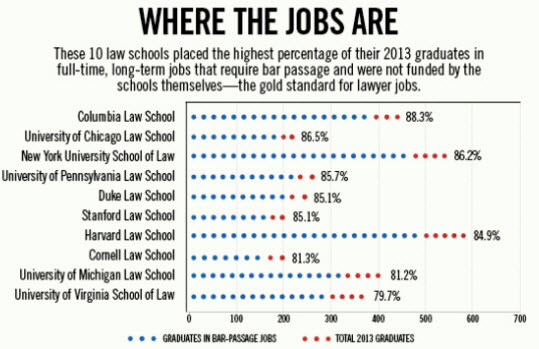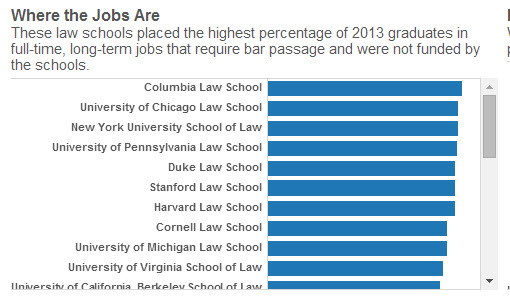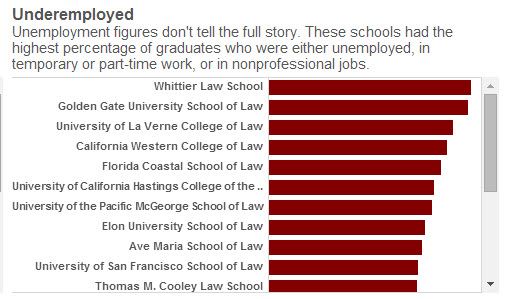A few days ago the National Law Journal published “Bright Spots Amid Glum Jobs Outlook,” which opened, “It’s a tale of two law schools—or, more broadly, of two legal education worlds.” It doesn’t get much more direct than that. What has to be surprising—certainly to any outside observer and I imagine to anyone who hasn’t dwelt a bit on the data lately—is how great the chasm is, and how precipitous is the drop from the best-performing law schools in terms of placing their graduates in the gold standard of lawyer jobs, namely those that are:
- full-time
- long-term
- requiring bar passage
- and not funded by the schools themselves.
Here’s the opening chart listing the top 10 schools on that metric: Columbia, Chicago, NYU, Penn, Duke, Stanford, Harvard, Cornell, Michigan, and UVa (schools are ranked top to bottom by total percentage scores, from Columbia at 88.3% to UVa at 79.7%; the horizontal axis is the total number of 2013 graduates, showing Stanford [for example] as a relatively small school and Harvard as large).
Note that as soon as you descend below the top ten schools you are already into fewer-than-four-out-of-five graduates getting these gold standard jobs—and there are more than 190 schools to go. You can view the same data this way if you’d like:
or chart it down by percentage of grads in “BigLaw” jobs (firms > 100 lawyers):
and at the opposite end of the spectrum you can look at unemployed (here the statistics top out at nearly 50%)
and underemployed (defined as unemployed plus those in temp or part-time work, or nonprofessional jobs) (topping out at nearly 60%)







